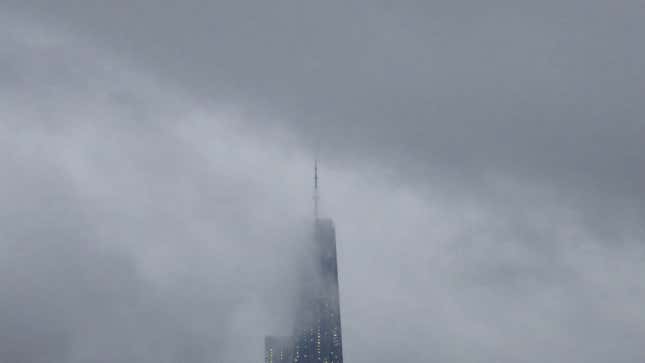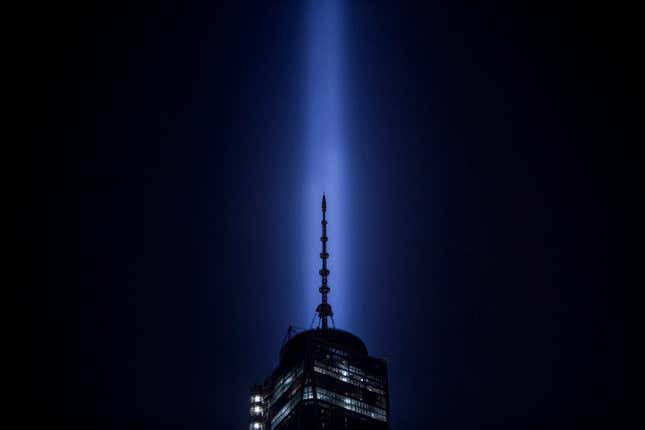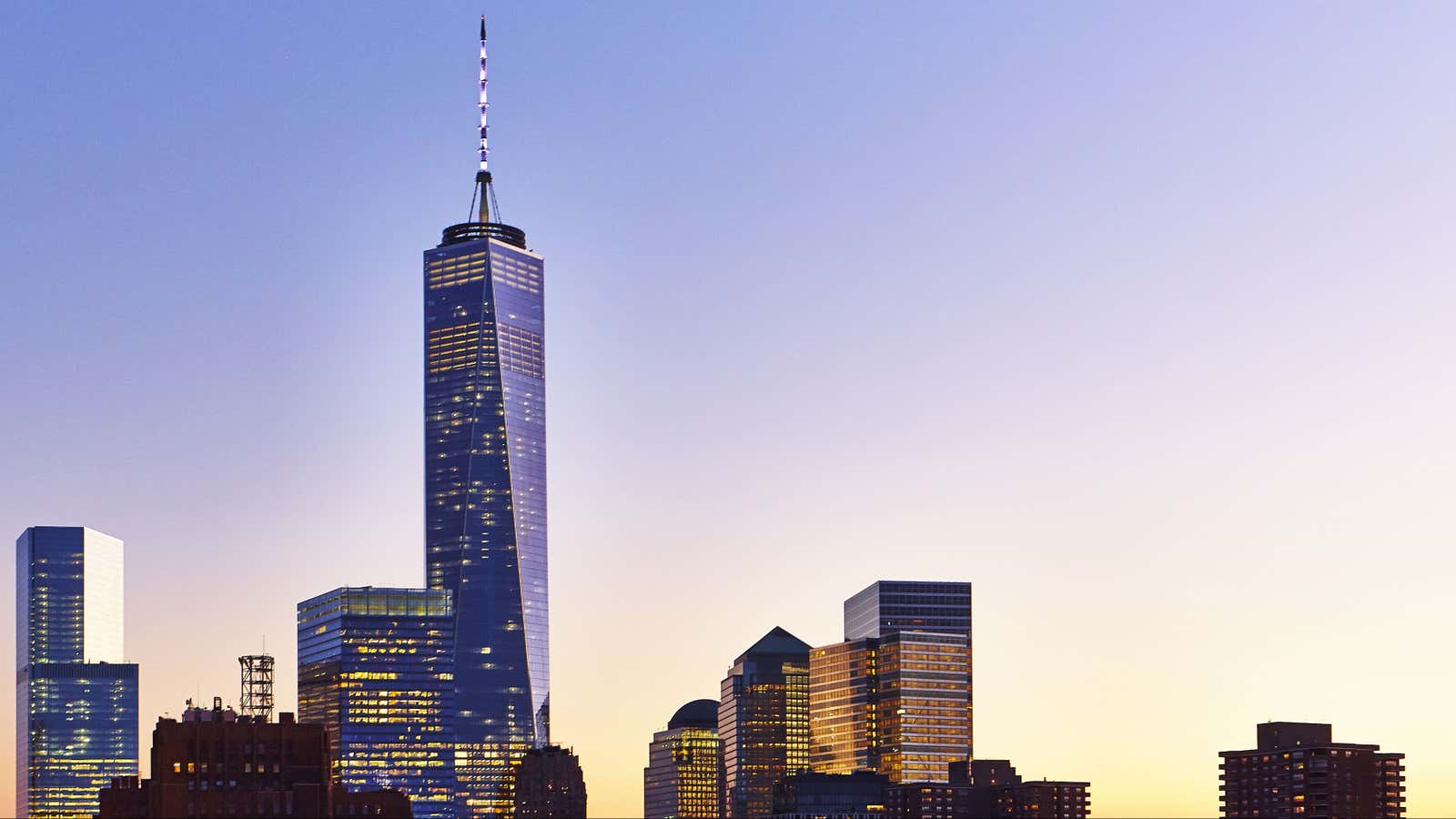We did it.
Thirteen years after the towers fell, One World Trade Center has risen in their place. The massive, glass-panelled skyscraper, which welcomes its first tenants this week, restores the balance of Manhattan with an exclamation point at the southern tip.
Born of politics and compromise, the building was never going to be an architectural masterpiece. The final product is a shell of the original vision to erect a soaring complex, known as the Vertical World Gardens, that reimagined New York’s financial district as the welcoming global capital it was always meant to be. Then came the revisions, the short-lived decision to call it the Freedom Tower, more changes, and delays upon further delays.
What emerged, finally, is altogether safe—from the 185-foot concrete base that defends One World Trade Center against the city around it to the ever-so-slightly creative choice of finishing the building with a stack of tapering octagons. It is hard to imagine anyone getting worked up over this design. From whatever angle you choose to view it, the edifice says just one thing with any passion: that it exists.
And wasn’t that the point? Before any plans were drafted, the building’s purpose—the message it would send to anyone who laid eyes on it—was already clear. We had to rebuild. When it was finished, the world would know that New York had rebuilt.
If reconstruction ever meant anything, it was during that raw period when the city still smelled like fire. Any sentiment seemed justified; you were lucky to feel anything at all. It was a rubble of emotion that led to all sorts of expression that only seem embarrassing in retrospect: Freedom fries, commemorative coins, and eagles with tears in their eyes. We call it 9/11 kitsch.

New York is allowed its vulnerable moments. Steely resolve wouldn’t have built a successful tower, either. Every dot on the city skyline is a product of its time, and if the 2000s were a painful, surreal, ultimately terrible decade, then so be it. But remember that the Empire State Building, Chrysler Building, and Rockefeller Center were built during the Great Depression, and while they certainly speak to their era’s ugly stratification of wealth, the towers also each managed to say something new and grow with the city around them.
Today, you can stand in Washington Square Park on a clear evening, look north toward the Empire State Building, and see New York as it was and will be. If you’re lucky, the lights atop the tower will be their signature silver, a black-and-white photograph of the city that is somber and electrifying and real. You might remember that directly behind you was a clear view of both Twin Towers on that day. Even if you never saw them yourself, you know where they were and what they looked like and how they would have made you feel. This, it always seemed, is the powerful message of the Tribute in Light, which once-a-year makes visible the specter of the towers.

So it was never going to be easy. But that is why we have art: to comment on this fucked-up and beautiful world. One World Trade Center was bound to be a fraught building, but at some point—presumably amid another round of designs mediated by politicians, the families of survivors, and the real estate developers investing in the project—it clearly just gave up on making any comment whatsoever. The highly reflective glass covering most of the tower seems to say, fine, whatever, see whatever you want in this facade.
One World Trade Center is 9/11 kitsch. This failure is most obvious in the spire, which stretches the building’s height to 1,776 feet. It’s the sort of empty symbolism that, like the Freedom Tower name, might have once seemed meaningful but now reveals itself to say nothing at all. Worse, actually, for the attempt to evoke American independence is actually an excuse to make One World Trade Center the tallest building in the United States, which will help sell $32 tickets to the observation deck, a crucial source of revenue.

The mistake is glaring because, to reach that symbolic mark, the 408-foot spire is much taller than it ought to be, comprising nearly a quarter of the building’s height. Its disproportion stretches out the top of the tower like an upside-down awl or medieval spear or extremely thin-ribbed condom. It’s ugly. An earlier plan would have encased the antenna in a spiraling fiberglass radome, but it was scrapped due to budget constraints, exposing a sparely designed crown that almost looks unfinished. (It was enough to be counted as part of the building’s height, a decision that appealed to sentiment more than logic.) The look is particularly unflattering at night, lit up in one color or another, especially compared to other spires along the skyline. Even the Bank of America Tower looks interesting by contrast.
It’s the spire that most strongly suggests One World Trade Center is stuck in its peculiar moment of creation, when the number 1,776 might have seemed comforting, not juvenile. But let’s not kid ourselves: It’s a dumb idea that will only seem dumber with time. Challenged to find meaning after the deadliest terror attack in American history, we built a skyscraper to an arbitrary height and called it a “beacon of hope.”
We did it.
